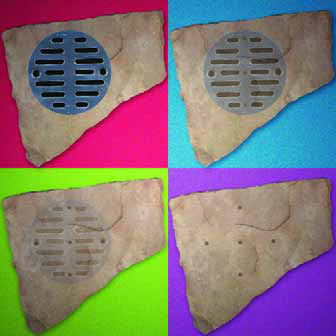column
This past January, I had the pleasure of traveling to Tucson, Ariz., to attend the annual conference of the Association of Professional Landscape Designers. The focus of this year's conference was the use of water in landscape design, and the program appropriately featured an interesting mix of experts on swimming pools, fountains and water gardening. To be honest, I didn't know what to expect when I signed on. I'd only been to one landscape event before, and much of that trade and the people in it have been mostly unfamiliar to me. As it turned out, however, this conference was
When I meet with clients for the first time, we talk a lot about what style, design, color and other elements appeal to them. We also talk about whether they want a low-maintenance garden, or whether they want to put a lot of work into their own high-maintenance yard. Consistently, however, I find that people do not even remotely understand what I mean by "maintenance." I hear things like, "I don't need a sprinkler clock," or, more truthfully, "I don't want to spend the money on a sprinkler clock" - and I immediately
During the past few years, I've come to the stark realization that there are too few quality craftspeople in most geographical areas of our country. And it's not just the watershaping trades: The same holds true for most
A little more than 100 years ago, in the first big growth spurt in the use of electricity, the harsh realities of the hazards involved with it quickly became apparent. Fires were common occurrences everywhere electricity was distributed, and serious (and often fatal) accidents made daily headlines wherever people came into contact with this wondrous phenomenon. Virtually all of the electric works being built in those early days were set up to provide lighting for a population tired of living in the gloom of candles, gas lamps and coal-oil lanterns. That meant that
You'd think that having lousy-looking deck drains was inescapable, given that about 99.9% of them look like a thing you'd find in your shower. Whether you're using PVC or brass grates, they disrupt the surface of any decking material and to my way of thinking are an unnecessary eyesore - nearly criminal when they interrupt the look and texture of a beautiful expanse of stone. It just doesn't make any sense to draw that much attention to the drains. That's why I decided to develop a deck-drain detail that doesn't break up the visual lines of the deck. It's extremely simple - and it's something you can
I feel like I'm working backward: First, I told you about a gargantuan water lily and its very specific requirements, then I offered a more general look at water lilies that will thrive in almost any pond. Now I'm going to give you some ideas and tips for designing with all types of water plants. It might have been more logical to approach things the other way around, but the important thing is that we're ready to complete the package and talk about ways of incorporating lilies and water plants of other sorts into beautiful, overall planting designs. As always, I will avoid getting too specific with recommendations. Instead, I'll stick to basic
In recent years, I've noticed a tremendous increase in the demand for shade structures - so much so that it would seem the era of slathering on suntan oil and basking in the sun in search of a savage tan might be gone forever. It's an exciting trend that really expands the creative possibilities for watershapers working across a broad range of styles and pricing levels. And no one could be happier about that than me: For one thing, I'm fair-skinned and burn easily; for another, adding
So you read my last article and were so excited about Amazonian Water Lilies that you'd decided to talk some clients into going for it. But alas, after measuring their yard, you recognize that you won't have enough room to accommodate the gargantuan watershape you'll need to host such an immense plant. But your clients are still hot to trot with something unusual, even after you've accepted the fact that






















Hemispheres of Interest